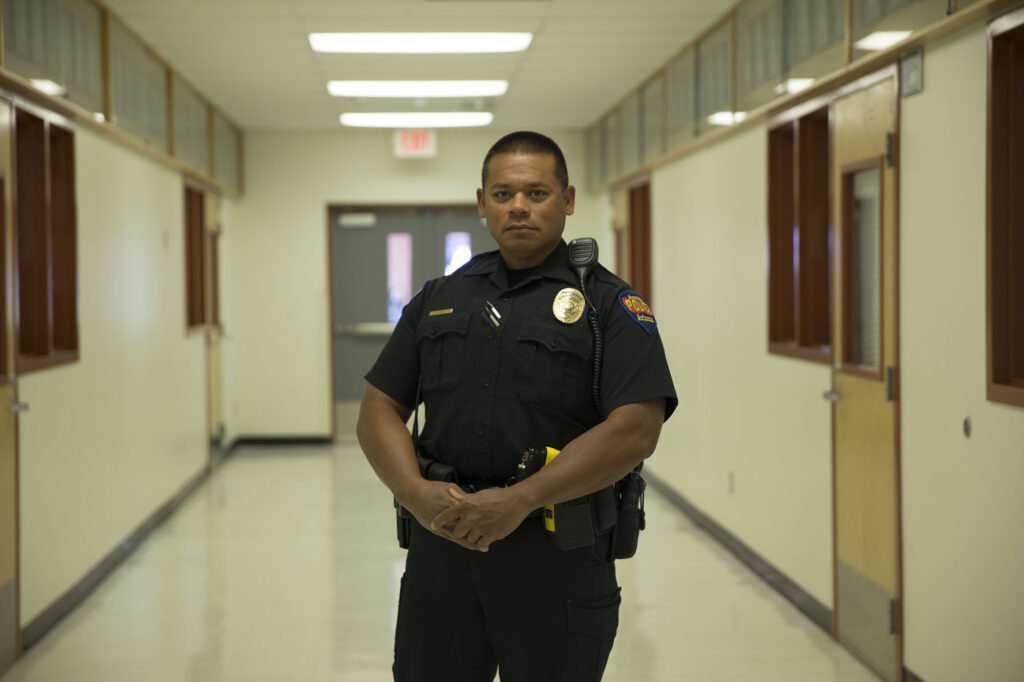In Maryland, a significant focus on school safety has emerged across various school board races, where candidates are voicing concerns about student security, mental health, and the overall learning environment. One notable candidate, Brenda M. Diaz, from Montgomery County, emphasizes the issue of “knife-wielding vandals” and advocates for reinstating school resource officers (SROs) previously removed from the area. This perspective reflects a larger sentiment within the state, where concerns about student safety have prompted candidates from diverse districts, including Talbot and Howard counties, to discuss the need for additional support, including law enforcement and mental health professionals. Andrea Chamblee articulates the multifaceted nature of school stressors, advocating for a stable learning environment by addressing issues like bullying, mental health struggles, and inadequate facilities, which she argues are essential for the well-being of students and staff alike.
Current statistics highlight the increasing volatility in schools, with a documented 49% rise in violent incidents nationwide in the 2023-2024 school year. While Maryland hasn’t yet released its own statistics for this period, previous reports note alarming increases in bullying, assaults, and threats. Specifically, incidents of anonymous bullying rose from 91 to 107, and reported assaults climbed from 83 to 98 during the 2022-2023 school year, suggesting a deteriorating safety climate within schools. The Maryland Center for School Safety tracks critical incidents, reporting a consistent number of serious occurrences over the past three years, underscoring the urgency of enhancing school safety protocols, particularly in light of recent alarming events, including mass shootings and threats from students.
The role of school resource officers, instituted under Maryland’s 2019 Safe to Learn Act, is being scrutinized. Each school jurisdiction in Maryland features SROs except for Montgomery County, which disbanded its SRO program amid concerns about disproportionate disciplinary actions against students of color. Candidates throughout the state largely support reintroducing or expanding SRO presence in schools, advocating for increased safety and the prevention of violence. Candidates like Jaime Brennan contend that while catastrophic school safety is adequately addressed, day-to-day violence remains a significant issue, indicating a need for structured officer placements in middle and high schools. This trend is echoed by several other candidates across various jurisdictions who see value in expanding the number of SROs to mitigate the growing concerns in schools.
Despite a general consensus on the necessity of SROs, many candidates assert that bolstering school safety requires more than just a law enforcement presence. A notable 25 candidates called for increased mental health and counseling services, recognizing that physical safety should be complemented by emotional well-being support for students. Tiffini Andorful, a candidate from Prince George’s County, emphasizes the importance of both physical safety and mental health resources to effectively handle conflicts and emergencies. Building social-emotional learning and acceptance among young students is voiced as a foundational strategy by several candidates, aiming to instill positive coping mechanisms and reduce the incident of bullying and violence.
Candidates are also increasingly recognizing the importance of fair and effective school discipline in addressing behavior-related issues in schools. Erica McFarland and Wieland-Cherry assert that revisiting school discipline policies is essential for creating a safe environment conducive to learning. They emphasize that educational institutions must take tangible steps to promote safety and respect among students, arguing that a consistent approach to behavior management is pivotal in reducing threats and fostering a positive school atmosphere. This combined approach aiming for collaboration between mental health initiatives and behavior management reflects a growing awareness of the complexity of safety challenges in schools.
In conclusion, the movement towards addressing school safety in Maryland encompasses multifaceted strategies, with significant advocacy for both the reintroduction of SROs and increased mental health support. The narratives shared by candidates across the state demonstrate a shared recognition that ensuring a safe learning environment involves addressing physical, emotional, and social dimensions of student well-being. As the landscape of school safety continues to evolve in response to increasing concerns, candidates in Maryland’s school board races are calling for actionable solutions that embrace a holistic approach to protecting students and fostering an environment where they can thrive academically and socially.

